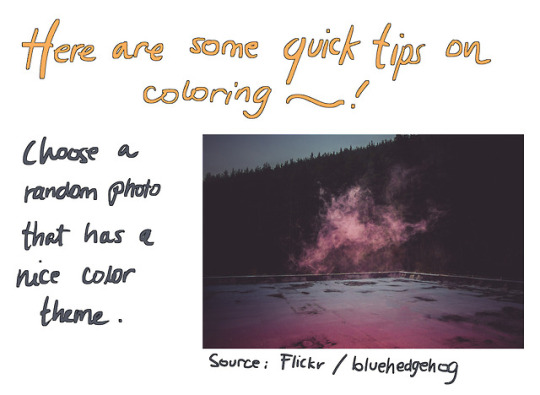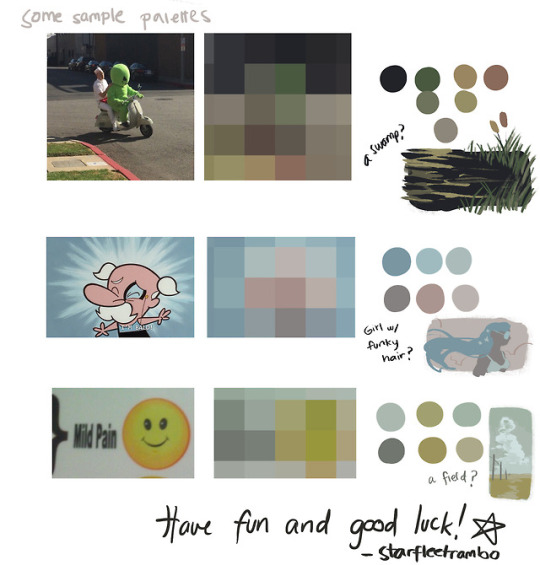Don't wanna be here? Send us removal request.
Text

How do men put on panyhose?? All I keep imagining is they run and jump into them while two friends hold them open. Is this true?
0 notes
Photo



One Piece puzzle for my nephew. Pretty proud of this!
5 notes
·
View notes
Text
If you're depressed and need a good, funny show to watch to make you happy: Shimoneta
This show is hilarious and surprisingly inspirational.
#anime#shimoneta#funny#funny shit#show#tv show#ayame kajou is amazing#everyone needs to be a dirty joke terrorist#i cant change who i am so i decided to change the world instead#sox#dirty joke terrorist#best anime
2 notes
·
View notes
Text
Don't read fanfiction if...
The characters you are reading about have similar or the same name as your pets. They will do something, and you will accidentally call them a characters name...
#oops#silly#embarrassed#fanfiction makes me goofy#i called my dog luffy#her name is lola#mistakes happen
0 notes
Text
My 3yo nephew is going to the renaissance fair on pirate weekend. I feel bad, because he is expecting to see Luffy and the strawhats... I'm proud that they are his favorite pirates, but boy is he gonna be confused...
2 notes
·
View notes
Photo

Can someone please tell me what kind of caterpillar this is?
2 notes
·
View notes
Photo





A quick coloring practice tip I made for Patreon
Comic | Patreon | Tip
78K notes
·
View notes
Text
My 3yo nephew peed on my shoe yesterday
0 notes
Photo

✌️Japanese Adjectives✌️
Grammar Tip : In Japanese, there are two kinds of adjectives: regular adjectives called i-adjectives and irregular adjectives called na-adjectives. It’s important to remember this, so you conjugate them accordingly.
🇯🇵 Want more? Try JapanesePod101 for free!!
230 notes
·
View notes
Photo

Procrastination | How To Stop Hey guys, as you may have seen I recently made a post asking for advice or tips on how to stop procrastinating because I haven’t been doing much work recently and have been falling behind in my classes and didn’t have the motivation to catch up. Well, I received a lot of helpful advice that I’m really thankful for, and I’ve received a couple of messages asking me to share the advice that I received so I’m going to summarise the things that were said to me below. I want to give a big shout out to @octoberswimmer, @littlebigmouse, @ex-nihilo-persona, @icystudying, @notprincesscharming, @chokopan, @study-the-thing, @sweetscientist, and all of the anon messages that I received for all of their advice! Tips and Advice to Stop Procrastinating:
Create a studyblr dedicated to what you’re studying so that you’re motivated more to study in order to create new content for the blog.
Follow more studyblrs so that as you scroll through your dashboard you can see how productive everyone else is being and become inspired to be the same.
Listening to music can help you focus. Spotify has a bunch of already made playlists to help you focus and study, or you could easily create your own playlists on Youtuber, Soundcloud, Spotify, etc.
Dedicate an area at your home specifically for studying or being productive so that when you’re in this area your brain and your body know that you have to be productive while there. Your bed is one of the worst places to study because your brain usually relates your bed to sleeping, so you might become really tired while studying in bed. If you get distracted easily at your own home then try to go to a library or a cafe. Somewhere that you can’t get easily distracted!
Turning off or putting away your phone or anything else that may distract you is a good idea. There’s a lot of extensions for your browser that you can install that can block certain websites for a period of time so that you can’t go on them to procrastinate!
Try to prepare some snacks and something to drink before you start studying so that you don’t wander off halfway through and then not return!
Split a major task that you have to complete into say three or four smaller tasks so that it doesn’t seem as daunting to you and starting it may seem easier.
Do the 50/10 or 30/30 rule. Do work for 50 minutes and then have a 10 minute break, or work for 30 minutes and have a 30 minute break. Find an interval that works best for you and try to keep at it until you’re motivated enough to work for longer periods of time. This helps to break up a seemingly large or scary workload.
Just do ONE thing. Start with answering one question, one sentence of an essay, or doing one page of required reading. If you feel motivated enough to keep going, then keep trying, but if you don’t you can stop there knowing you’ve at least started and that it might not be as hard the next time you start.
Doing it first thing in the morning might make you feel better. The more you put it off throughout the day, the worse and more guilty you may feel.
Be honest with yourself and try to do the important tasks first, especially if there is a deadline coming.
Just do it! Starting is the hardest part and once you’ve actually begun doing what you’ve been putting off, you’ll find that it’s not as difficult or as scary as you were making it out to be.
How to Start Studying at Home In Eight Steps:
Step One: Make your bed and clean your room.
Step Two: Brush your teeth, wash your face, brush your hair, and get changed into something clean and comfortable.
Step Three: Clean and organise your study space.
Step Four: Put the materials that you will need on your study space (your pens + notebooks, textbooks, laptop, headphones, etc.)
Step Five: Prepare some snacks and something to drink.
Step Six: Put on some relaxing music or something that will help you focus.
Step Seven: Open your notebooks, textbooks, and laptop to the documents or pages that you need.
Step Eight: Just do it.
I really liked something that @icystudying said, “Motivation isn’t a bus that will stop for you, it’s a car you need to drive.”
4K notes
·
View notes
Photo

Japanese for Total Beginners || How and Where to Start Studying Hey guys, I’m going to try and answer my most commonly asked questions that I continuously receive in the next following weeks so if there’s anything you’d like answered feel free to submit your questions. I’m also going to try and find a new theme as a lot of you guys have mentioned that you’re unable to view my FAQ page while on your mobile devices so once I’ve found a good theme I’ll ask you guys to check it out so that you can let me know if it works or not! This post is going to be regarding how to study Japanese as a total beginner. The single most commonly asked question that I receive (and I get asked this at least once a week since starting my blog back in 2016) is something along the lines of “I’ve never studied Japanese before but I really want to, but I have no idea where to start.” so I’m going to try and answer this question today to the best of my abilities. WHAT SHOULD I LEARN FIRST? I recommend starting off with learning the kana system (hiragana and then katakana). While learning how to read, write, and recognise kana, you should also spend time learning how to properly pronunciate the kana. Learning Japanese pronunciation at this step will help you a great deal as you start progressing into learning the language. Once you’ve learnt kana you can move onto introducing basic grammar structures and basic vocabulary together. If you’re self-teaching I really recommend getting a textbook because most textbooks introduce grammar and vocabulary together in easy to understand ways. If you cannot afford to purchase a textbook there are PDFs floating around online and many websites that offer free Japanese lessons. Once you can use kana, understand some basic grammar and vocabulary, and are able to produce your own basic sentences, I would then introduce simple kanji. This would include numbers, days of the week, months, and the kanji version of some vocabulary you’ve learnt (such as 私・わたし/食べ・たべ). After that it’s just a matter of introducing new grammar, vocab, and kanji which will gradually increase in difficulty as you continue to progress through the language. SHOULD I LEARN GRAMMAR OR VOCABULARY FIRST? Vocabulary for me is mostly memorisation - memorising the meaning and the word/characters - and then simply applying the vocabulary to the grammar structure, which is why I like learning them together because I think that they tend to go hand-in-hand. HOW OFTEN SHOULD I STUDY JAPANESE? This really comes down to the individual as it depends on your own personal schedule and abilities. Some people ate able to study every single day and others can only do it a couple times, or just once a week. The key is finding a routine that works for you and keeping at it to the best of your abilities. They say it takes 21 days for something to become a habit. What works best for me is studying early in the morning after waking up and then I feel I can go about my day without any concerns. I have an entire tag dedicated to immersing yourself into the Japanese language so feel free to check it out. WHAT’S A GOOD STUDY ROUTINE? I often get asked to provide specific details or give study routines regarding where to begin with studying Japanese so below is my recommendations on where to start. Hiragana:
Begin with learning the 5 vowels in Japanese (A, I, U, E, O) - learn how to read, write, pronounce, and recognise them.
Continue with learning vowels + consonants (K, S, T, N, H, M, R, Y, W) - learn how to read, write, pronounce, and recognise them.
Study the exceptions (SHI, CHI, TSU, FU) - Try to memorise these in particular as they can confuse beginners quite easily.
Katakana:
Study katakana similarly to how you studied hiragana beginning with vowels, and then moving onto consonants and focusing on the exceptions.
Try to create your own flashcards in order to memorise the characters.
There are also a number of apps designed to help you recognise and memorise hiragana and katakana characters as well as to test your knowledge on them.
Vocabulary + Grammar:
I would begin with learning basic expressions such as greetings and self-introductions. I’d use the information from this website to find basic expressions and greetings.
Once you’ve memorised some basic expressions you should move onto basic grammar and vocab.
I learnt by using the Genki textbook so I recommend following their order of lessons, otherwise you can search on google for Japanese lessons to follow.
Make sure to study Japanese particles very seriously as they can often stump Japanese learners! Don’t be afraid to spend a long time studying them.
Kanji:
Once you’ve mastered kana and are comfortable with creating basic sentences in Japanese, I would start introducing kanji. As I mentioned before I would start with numbers, days of the week, months, and then kanji versions of vocabulary that you’ve already learned.
If you search “Kanji lessons” on google you’ll come across some useful websites like this one.
After this you just have to continue building up your grammar, vocab, and kanji knowledge. Resources: PDFs -
Genki I Textbook
Genki I Workbook
Genki I Answer Key
Genki II Textbook
Genki II Workbook
Genki II Answer Key
Genki I + II and MP3 files
Japanese For Busy People 1
Japanese For Busy People 2
Japanese For Busy People 3
Japanese For Busy People Workbook
Japanese Pronunciation -
Learn Japanese Pronunciation in 14 Minutes
Introduction to Japanese Pronunciation
Top 5 Japanese Pronunciation Mistakes to Avoid
Charts -
Hiragana Chart
Katakana Chart
Hiragana + Katakana Chart Combined
Apps -
Anki (flashcard app)
Memrise (learn Japanese)
imiwa? (dictionary app)
Learn Japanese (introduces phrases and vocab)
Learn Japanese by Mindsnacks (increases vocab)
Hello Talk (talk with native speakers)
TenguGo Kana Hiragana Katakana (introduces kana system)
Kana Quiz (test your kana knowledge)
Website -
Tae Kim’s Guide to Japanese (Study Guide + Lessons)
Jisho (online dictionary)
JapanesePod101 (Japanese lessons)
Tofugu (Japanese lessons + Cultural lessons)
4K notes
·
View notes
Note
Hi! Your blog is absolutely great, it got me in the frame of mind to start practising Japanese again, so thank you! ^_^ I have a question about studying hiragana/katakana (ik this blog is kanji but I assumed you're pretty good at kana too?) : how does one become fast at reading? I know all the kana characters, but it takes a while to decode things, even without trying to translate at the same time. Maybe I just need to practise more? Do you have any methods for speedier reading? Thanks again!
Firstly, I’m honoured to have motivated you in your studies! I think my blog is only a humble affair but I’m glad to have been some help.
I may be wrong, but I’m going to make a deduction based on what you said that may get to the heart of the issue. If the following assumptions that I make are way off the mark, forgive me. If you’re like me, you’ll have prioritised learning kana, and then vocabulary and maybe some grammar, whilst probably leaving kanji to one side, largely untouched. The result of this is that you might know a lot of vocabulary in kana, but not in kanji, and trying to read sentences entirely in kana can be very difficult because kana alone does not give you many “cues”. Let me give you an example.
なんじですか?
Now, you probably now this phrase inside out, and most other people reading this could probably guess at the meaning of that sentence. Of course, it means “What time is it?”. You can probably seperate the words into なん、じ、ですか?. The reason you can easily disect all of that hiragana into seperate words is because you learned them seperately. And for small sentences, this works fine. However, the real problem with trying to read a sentence entirely in hiragana is that there is no “cues”. You can’t obviously tell whether the first word is なん or なんじ just by looking at the sentence - but you know because you’ve learned it. Again, in small sentences, this doesn’t pose much of a challenge, but when it comes to reading larger sentences in entire paragraphs of text, the lack of “cues” to tell you where one word ends and the next one begins becomes far more problematic. Let’s look at a more complex sentence.
さんじからよんじまでテストがある。
Already, it becomes more difficult to see where one word ends and the next begins because kana doesn’t offer any reading cues. Is it じから or is it じ、から? Immediately when I see a sentence written all in kana, this is the struggle I face. I waste half my time trying to figure out where each word is so that I can say the sentence correctly, and instead of being able to read it fluently in one go, it’s more of a case of patch-work until I figure it all out word by word and then read the entire sentence again. From the way you phrased your question it seems as though the reason why you read slowly is because of an over-dependence on kana. We’re all guilty of this in the early stages, especially in the weird “more than a beginner but not quite intermediate” phase, where we know far more kana than kanji. Let’s have a look at that same sentence again, but this time by replacing most of the kana with the equivalent kanji.
三時から四時までテストがある。
三時から四時までテストがある。
三時から、四時まで、テストがある (Comma to indicate change in cadence)
三時 = 3 o’clock.
から = from
四時 = 4 o’clock
まで = until
テスト = test
がある = to exist
“There is a test from 3 o’clock to 4 o’clock.
Replacing all of that kana with kanji helps me find the cues for the words in the sentence. By using kanji, the words から、まで、and the particle が all stand out from the rest and provide a frame of reference. In this way, I know that the first word is 三時 and that it does not include から. I know that the second word must begin after から, and that it ends before まで, so I read 四時 as one word. Besdes that, after learning the compound kanji 四時, you’ll be able to recognise that it is a distinct word very easily, however with kana this is much more difficult. These cues help me avoid running one word into another and getting confused about where one ends and the next begins. It can be hard to get into the swing of this at first, but with practice you’ll find a natural cadence that would be extremely difficult to achieve if only just reading the sentence in kana. If you look carefully you’ll find that the majority of sentences with kanji are split up in this way, between particles, words that don’t use kanji, and also furigana.
In Summary:
My advice is to try and “pair up” the vocabulary you already know in kana to the equivalent kanji and try reading sentences with kanji in them. With practice, your brain will be much quicker at recognising a two/three kanji compound instead of large words written in kana characters. By translating more and more of your kana vocabulary to kanji, your reading speed will increase, as well as your overall literacy. You’ll also find that when speaking sentences aloud, you come closer to the natural cadence of a Japanese speaker by using kanji, as these cues are present in native speech.Granted, it’s going to take a long time. I myself am in the process of this journey because I’ve learned a lot of vocabulary without learning the equivalent kanji.
Well, I hope you found this helpful. If I completely missed what you were trying to ask exactly, feel free to get in touch again and I’ll try for round 2. :P
16 notes
·
View notes
Text
Review: PIBO

A Japanese picture book app.
Difficulty level: beginner | intermediate | advanced
Options
Japanese only: ☑ Yes; ☐ No
Free: ☑ Yes; ☐ No (Paid version available)
Interaction with others: ☐ Yes; ☑ No
Score: ★ ★ ★ ★ ☆
PIBO is a really neat picture book app available on iOS from the App Store. It’s exactly what it says on the tin: A really big collection of picture books entirely in Japanese.

After downloading the app, here’s what you see. The selection available to you changes each day. Now, this interface is important to explain what differences there are between free and paid users. Paid users
Get an unlimited number of books to read per day’.
See where it says 「0かい」? That’s because I’ve already read my 3 free books for the day when I took this picture.
Can access the full list of available books (through「すべて」).
Can access the books they’ve marked as favorite (through 「おきにいり」).
Which, obviously, free users can’t do, but I find that just going through 3 small books a day is a very good form of practice. And, as a free user, if you really liked one book, you can still find it under your 「りれき」 tab!

Opening a book will give you information about its intended age group - bearing in mind that ‘intended age group’ refers to Japanese children, who have grown up with the language! - and a little bit about the story you can expect. I’ve seen mostly books for the 3-6 age group, but also something marked appropriate for ages 10-12, which made me mark this app as suitable for the lower intermediate level.
Final comments
I’m really enjoying this app. It’s a good way to get some exposure to very simple, but natural Japanese. You run into odd variations of conjugations that a textbook probably won’t provide for you, which is only a good thing! The texts are entirely in hiragana, too, so if your kanji knowledge isn’t that solid yet, this is a safe bet for you.
974 notes
·
View notes
Photo




Today I want to talk about Kanji Quizzer. My new favorite app!
I downloaded the app about 2 weeks ago and it has been invaluable to me ever since. The app is fairly straightforward. It separates flashcards into groups : Hiragana, Katakana, N5, N4, N3, N2, and N1.
When you select a group it takes you to a screen that displays a flashcard with one kanji character on it. Below there are 6 options for you to guess what the answer is.
Once you choose an answer the card will flip over to reveal whether you were right (highlighted in green) or wrong (highlighted in red). It will also give you both the on and kun readings for the kanji.
I love this app, it’s really helped me out, and it’s great for studying on the go. The kanji is displayed in a large enough size that it’s very easy to read. All in all, this is one of the most valuable Japanese learning apps I’ve ever had.
*I have not been paid to write this review. Everything stated above is a matter of my own opinion*
1K notes
·
View notes
Text
Put Down Your Pen
Inhale for 4 seconds.
Hold your breath for 7 seconds.
Exhale for 8 seconds*
Repeat a further 3 times.
*Make an “O” (pout) with your mouth while you exhale.
This breathing exercise is a great stress reliever. So now that I’ve gotten you to take a quick break from your studies, take a moment to appreciate how far you’ve come on your journey. Think for a moment on how little you knew before you started, and how much you know now. Imagine that in a years time, you might know twice as much as you do now. Let that inspire you.
121 notes
·
View notes
Photo

Today we learned how to tell time in Japanese!
316 notes
·
View notes
